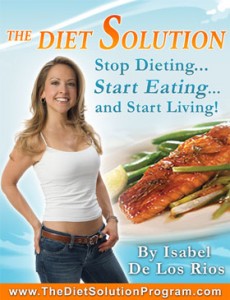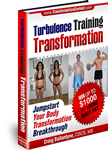Fat Loss Nutrition
 Losing weight, maintaining weight, preventing heart disease, lowering blood pressure and cholesterol, and improving overall health are all different goals but all require the same thing—a healthy eating plan.
Losing weight, maintaining weight, preventing heart disease, lowering blood pressure and cholesterol, and improving overall health are all different goals but all require the same thing—a healthy eating plan.
For many people healthy eating is a struggle as much as it is confusing with all the conflicting information out there as to what people should be eating, how much they should be eating and when they should be eating. The good news is that it is a lot easier than it sounds. It is simply a matter of defining your goals, choosing the foods that will help you meet those goals and then committing yourself to stick with your game plan.
A Brief Understanding of the Food Industry
There is a group of diet plans that are getting a lot of attention these days because they are rooted in the belief that man should only be eating foods that come from the earth and are all natural. While their programs tend to be a bit extreme for the average person, there is a lot of truth in what they are saying which is that your body is not set up to process foods that are, well, processed.
If you pick up a bottle, box, package or jar of most grocery store items, you will see a laundry list of unrecognizable ingredients. Many of them are made in factories and laboratories and have absolutely no nutritional value. Yet, they are everywhere in nearly all the foods you eat.
Why is this? It is faster and cheaper to “make” food than to grow or harvest it. This processing also allows much of the food you eat to have a longer shelf life. Food manufacturers are making large quantities of cheaper food that lasts longer in your pantry. The problem is that when you eat these foods, they last a lot longer in your system yielding poor health and excess weight.
The Good Foods
You might have already heard this, but it is worth repeating—always shop the outside perimeters of a supermarket. This is where you will find the healthiest food choices including fresh fruits and vegetables, lean sources of protein like chicken, turkey and fish as well as eggs and low fat and nonfat dairy products. These are your must haves.
Everything on the inside of the perimeter is open for debate as to its nutritional value. There are a few items that you can get like bottled water, canned fishes like tuna and salmon, brown or whole grain rice, grains and breads, and nuts like almonds, cashews, pistachios and peanuts. These are safe bets. But a majority of the aisles are nothing more than sugar and salt-loaded foods and drinks.
The Bad Foods
It would be too much to give you a rundown of what not to eat. A good rule of thumb is that if it comes in a box, jar or bottle with instructions on how to cook it, you should leave it on the shelf. Foods that contain high amounts of sugar (be careful as sugar is listed in a variety of ways), salt and fat are definitely items you want to remain out of your shopping cart. This means any baked goods, candy, chips, fruit juices, sodas (including diet) and white foods like rice, bread and pasta.
Buyer Beware
One thing you need to know is that quite often, foods that look and sound healthy are often not. For example, many people think granola bars are a great snack. However, most of them are loaded with high amounts of sugar and fat (not the good kind either). The best thing you can do is look at the nutrition information on the packaging. If sugar is listed in the first five ingredients, that means there is a considerable amount added to the bar.
Many people fall into this healthy food trap so you need to be proactive in reading labels and deciphering the information that is given. Cereals that claim to be healthy are another example of how sugar and salt and high carbohydrate content can sneak into your diet. This can be frustrating if you are trying to lose weight and the scale does not seem to be budging.
Defining Your Goals
Depending on what you want to accomplish—losing weight, maintaining your weight or gaining weight—your diet will play a more important role than anything else. This is why many people fail at weight loss. They have the exercise part down, but not the nutrition aspect and, unfortunately, clocking in hours at the gym each week will do little to help you lose weight if you are not incorporating a healthy diet along with your exercise program.
Once you establish your goals, you need to figure out how many calories you need. For instance, losing weight would require a deficit in your current calorie intake while someone trying to gain weight would have to increase their calorie consumption. If you are trying to maintain your weight, small tweaks in your meals can help that as well. Truthfully, everyone’s diet needs to be modified every now and then for various reasons.
How to Eat Properly
Eating balanced meals and snacks will not just benefit your healthy and weight loss goals, but it will also ward off hunger which can lead to raiding your pantry for whatever you can find regardless of how healthy or not it is.
It will also give you energy throughout the day without getting that late-day sluggish feeling and will keep your body’s metabolism going which is very important if you are trying to lose weight. 
Proper nutrition does not have to be difficult nor confusing. As long as you stick with foods that are not processed or loaded with sugar and salt, you have a good starting point.
If you are unsure if a food is healthy or not, look at it. If it is in its natural state, meaning as it was intended to be eaten without anything added to it, odds are it is good for you. But if you see a long list of additives, preservatives and all kinds of difficult to pronounce words, keep walking.
Healthy eating combined with a highly effective workout program, like Turbulence Training for example, will quickly put you on the fast track to weight loss and overall improved health.
Let me know about your success,
Craig Ballantyne, CTT
Certified Turbulence Trainer